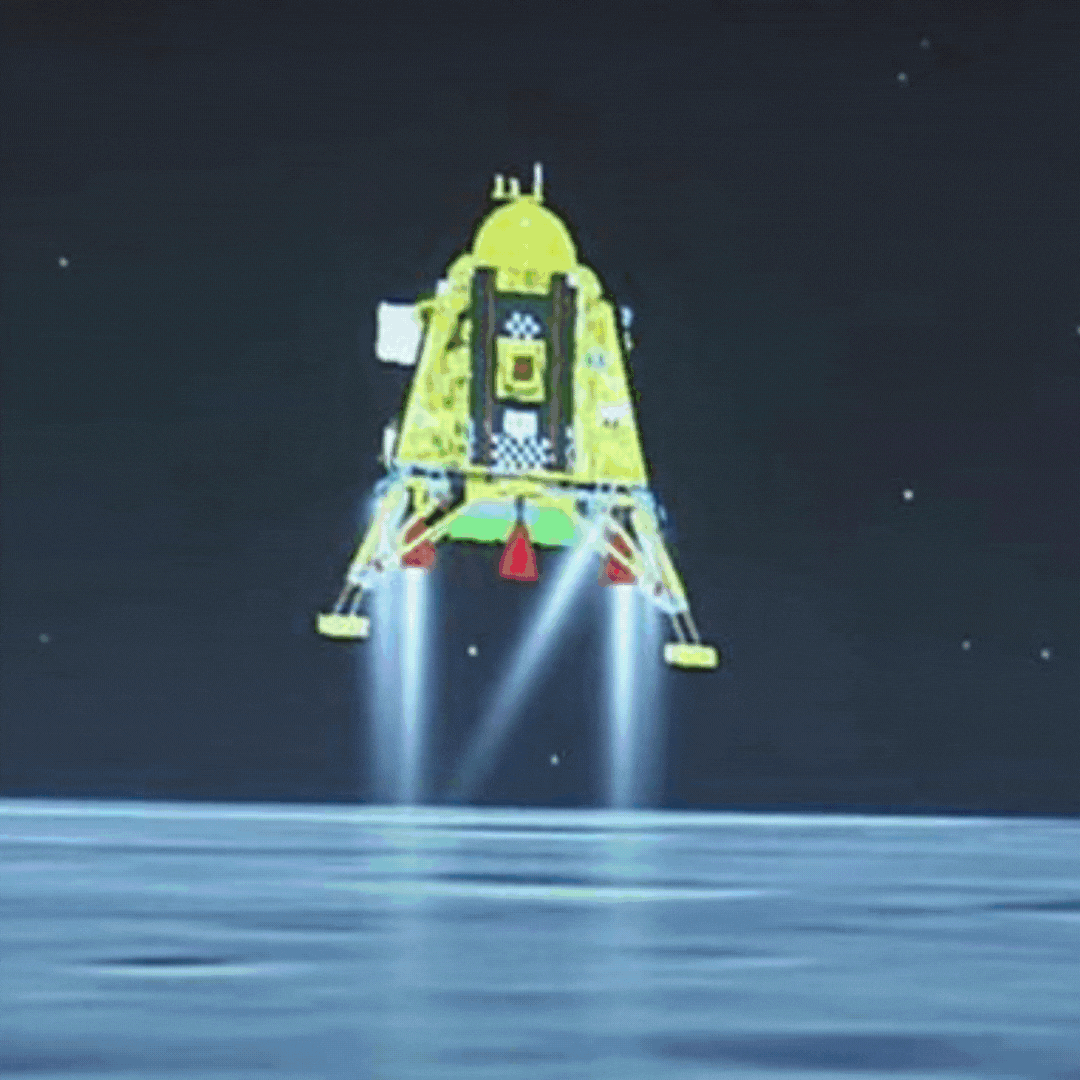
Chandrayaan-3 lands on the Moon. India becomes first to make south pole landing.
Credit: PTI Photos
Riding a billion cheers and cruising through a tricky descent of about 19 minutes, the lander module of Chandrayaan-3 kept its date with the moon on Wednesday.
The 6.03-pm touchdown made India the first country to reach the largely unexplored south polar region of the moon, setting up a series of experiments spanning 14 earth days, through payloads on the lander, rover and propulsion module.
ISRO Chairman S Somanath announced, “India is on the moon!” to set off wild celebrations at the Mission Operations Complex (MOX) in the ISTRAC campus in Peenya.
The lander module comprising the lander, Vikram, and the rover, Pragyan, had a near-textbook descent on to the lunar surface through its four phases — rough braking, attitude hold, fine braking and terminal descent — and finished what experts have been calling one of the critical phases of the mission.
Somanath announced the successful soft-landing of the lander module, in the presence of mission director P Veeramuthuvel, Associate Project Director K Kalpana, and Mission Operations Director M Srikanth, and U R Rao Satellite Centre Director M Sankaran.
Amid the celebrations that also saw Prime Minister Narendra Modi joining in, virtually, from South Africa, the ISRO chief remembered how “the pain and agony” from Chandrayaan-2’s failure to land on the moon, in 2019, translated to relentless efforts to perfect the Rs-615 crore follow-up mission.
“The learning we got from Chandrayaan-2 has really helped us in perfecting the methodology and to conduct a large number of experiments and tests to improve the process of landing,” Somanath said. The Chandrayaan-3 team consists of many scientists and personnel who were part of the 2019 mission.
The landing was performed by achieving most of the nominal conditions, including the velocity of the touchdown which was less than the intended velocity, of two metres per second. “It gives us confidence that the health of the craft is very good,” the ISRO Chairman said.
Two hours after the touchdown, ISRO said communication has been established between Vikram and MOX-ISTRAC. The space agency also released images from the Lander Horizontal Velocity Camera captured during the descent.
Chandrayaan-3 assumes significance because it will inspire India to configure missions to Mars, Venus and beyond. The success of the mission with a made-in-India craft will inspire future scientific exploratory missions, marking the beginning of “a golden era”, Somanath said.